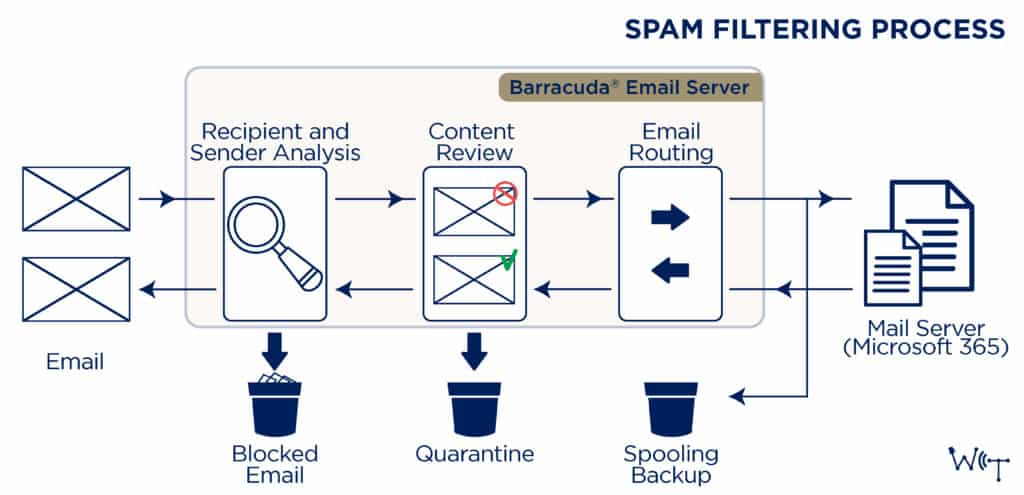
How Spam Filters Work
Email spam continues to be a pervasive problem, impacting productivity, security, and user experience. Each day, 88 billion spam emails are sent globally. Did you know that 91% of cyberattacks start with an email? Thankfully, spam filters play a crucial role in keeping our inboxes clean and secure. Keep reading, as we are going to take a dive into the inner workings of spam filters, shedding light on the techniques and mechanisms they employ to identify and block unsolicited or dangerous messages.
The Purpose of Spam Filters:
Spam filters play a crucial role in maintaining email security, reducing unnecessary distractions, and ensuring that users receive legitimate and safe emails in their inboxes. However, it is worth noting that spam filters are not perfect and there may be cases where legitimate emails get incorrectly classified as spam or vice versa. You should regularly check your spam folders and mark any false positives to help improve the accuracy of the filtering system.

Recipient and Sender Analysis:
By performing an analysis on both the recipient and sender email addresses and settings, spam filters can make more informed decisions about whether an email is likely to be legitimate or spam. These techniques are continuously refined through machine learning, user feedback, and global reputation, allowing the spam filter to adapt and improve its accuracy over time.
Content Review:
Content review is a critical aspect of email spam filtering, where the actual content of an email is analyzed to determine its legitimacy and whether it should be classified as spam. This process involves examining various elements within the email, including the subject line, body, attachments, and embedded links, while looking for patterns and characteristics commonly found in spam messages. This may include specific keywords, phrases, or suspicious URLs. Content review is typically carried out using a combination of rule-based systems and machine learning algorithms to identify patterns and characteristics commonly associated with spam emails.
Email Routing:
Email routing in email spam filtering refers to the process of directing incoming emails to appropriate destinations based on their spam classification or other predefined rules. The primary goal of email routing in the context of spam filtering is to manage and handle emails efficiently, ensuring that legitimate emails reach users' inboxes while spam is appropriately filtered and handled. The goal is to strike a balance between effective spam filtering to protect users from unwanted content and ensuring that legitimate emails are delivered promptly to their intended recipients.
Email spam filtering is an essential defense mechanism in today's digital landscape. By understanding the various techniques and best practices involved, individuals and organizations can significantly reduce the impact of spam emails. Implementing robust spam filtering measures not only protects against unwanted messages but also enhances overall email security and productivity.
Stop unwanted, unsolicited, or dangerous messages from reaching inboxes with Barracuda Spam Filtering. With the right strategies in place, you can enjoy a clean and secure inbox, ensuring that important messages reach you while keeping unwanted spam at bay. Contact West Central Technology to learn more about Spam Filtering.
